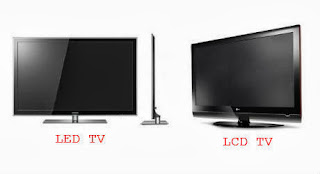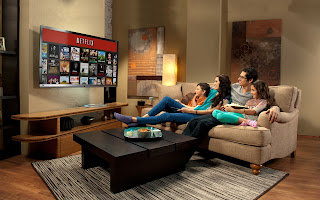Time for the start of the Winter Olympics on 12 Send in February ARD and ZDF their programs in high-definition quality. Thus, the range of an unencrypted so called HD TV is expanded significantly . test.de explains what high definition television brings and what equipment is needed.
TV in better quality
Not only conventional image quality, but high-definition TV : This is what the abbreviation HDTV , english high definition television. HD TV images are generally sharper and more detailed than standard definition television images . The actual image quality depends mainly on the used television and the injected signal. Radiate HD channels either produced from high-resolution broadcasts , or they expect normal programs produced subsequently high. Such reworked productions not deliver quite as good picture as "real" HD broadcasts .
Number of HD channels grows
After a few test programs start the first and ZDF with the start of the Winter Olympics in Vancouver finally entered the era of high definition television . The public broadcaster Arte transfers since July 2008, better quality. Also, some private stations broadcast already - but encrypted - in HD from : RTL, Vox, Sat.1, ProSieben and Kabel Eins . Some specialty channels and parts of the pay station Sky Programme will complement the range of high-definition television .
It depends on the receive path
To receive high-definition television , there are several possibilities: The widest range of channels , there is usually via satellite. ARD, ZDF and Arte , as well as the private channels that offer HD , all have received over a bowl. When cable TV , the number of received stations depends on the cable provider from: Germany, the largest cable provider has until the end of January an agreement with ARD and ZDF, the HD offering the pay channel Sky do however many cable providers subscribe. The channels are broadcast via the high-resolution cable connector, should ask their provider interested in HD . Also a very fast internet connection - DSL least 16 000 , it should already be - is it via IPTV possible to receive high-definition television . Only via antenna ( DVB-T) there is no chance in Germany for HDTV . This will probably only be possible in a few years from today's perspective .
Tip: Regardless of which receive path you choose, in any case, you need a corresponding digital signal reception . Satellite dishes and cable connections can be made according to upgraded or converted to . Most cable providers charge a monthly fee for it . Receive path which is best for what and how many charges are about , refer to TV access.
Big catch: Scrambled Channels
Private broadcasters such as RTL , ProSieben, Sat.1 or pay TV channel Sky broadcast their HD channels only encrypted. So the providers hope for significant control over their contents : for example, they can prevent such recordings . Currently, RTL, VOX , ProSieben, Kabel Eins Sat.1 and radiate only via the Astra satellite operator and a joint platform "HD +". Spectators watch the first 12 months free . After falling at a cost of 50 euros per year . Three options are currently under discussion or are already available :
A special satellite receiver with integrated HD + card to recognize the logo "HD +". Some of these devices are already on the market. Two of the Stiftung Warentest already in the current test satellite receiver ( test 02 /2010 ) were tested.
Another possibility is to be offered during the first quarter : a single HD + card with a matching module for the so-called CI + slot. Here then is sufficient a TV with the right receiver and CI + slot , an additional device is required. However, only very few TVs are certified for it.
Paid cards with HD + modules are also announced to upgrade for receiver with so-called CI slot for this year . These will be what exactly , but is not yet known .
In all three variants, viewers must expect that , for example, a movie can either does not absorb or advertising can not be skipped .
Conclusion: Those who already want to now look at the major private broadcasters in high resolution quality are dependent on the satellite operator Astra. Who can wait a little , that should do quietly: The first available only in very few areas, cable providers have announced feed in their network soon RTL HD and VOX HD . Here in the next few months expect a lot of movement , even where the potential receivers .
Tip: If you want to mainly ARD, ZDF and Arte see in high-resolution quality, ranging from a normal HD receiver . The public channels are broadcast by treaty obligation to send their content unencrypted. Some cable receiver under test : DVB receivers .
Modern technology is essential
First the bad news : an old tube TV can not be a high-definition television . Who wants to see sharper images , can not get around a flat screen TV or an HD-compatible projector. In addition, it is quite important to note that the high-resolution viewing experience nothing stands in the way :
Receiver. For high-definition TV an HD -compatible receiver is imperative . For example, reaches an older satellite receiver without HD not .
TV . Devices with the logo "HD ready" can represent high-resolution images, but do not contain a receiver . Wearing a device , however, the logo "HD TV" is an integrated receiver .
Transmission path. But beware: Few television receivers have for all major transmission paths on board , so for cable, satellite and antenna , the latter , however, in Germany does not matter. However, the receiver has to match with the transmission path. Example: If the TV is integrated only a digital cable receiver , but the audience looks over satellite, an additional HD -compatible satellite receiver ( test 02 /2010 ) is needed - even if the TV supports the "HD TV " logo .
External receiver . An additional receiver must be the TV as well as HD-ready . The buyer to recognize the logos "HD TV" or " HD + " . Unlike a built- in TV receiver external device often offer additional options such as recording functions.
Tip: flat screen TV with the best picture quality for high-definition television , see the Product Finder TV .
Lost and found
Who has all the right devices and receives a digital television signal , which was found during a search of the new channels like ZDF HD . Before the start of the Olympic Winter Games run on ARD and ZDF still testing programs , but can already storing in your own program selection . Savvy viewers can also directly enter the data from the respective broadcaster : About the satellite operator Astra , for example, ARD, ZDF and Arte HD on leave in the position 19.2 degrees East and the receive frequency 11.362 GHz.
Conventional TV still possible
Do not worry: Even without watching high-definition technology television viewers only times more easily . All HD devices can receive and process standard signals. Who , for example, a flat screen TV without a built-in or external HD receiver at home , can continue as before so its usual broadcast - just not high definition. Owners of old tube TVs also need not worry : The conventional range , the transmitter continues in parallel .










.jpg)